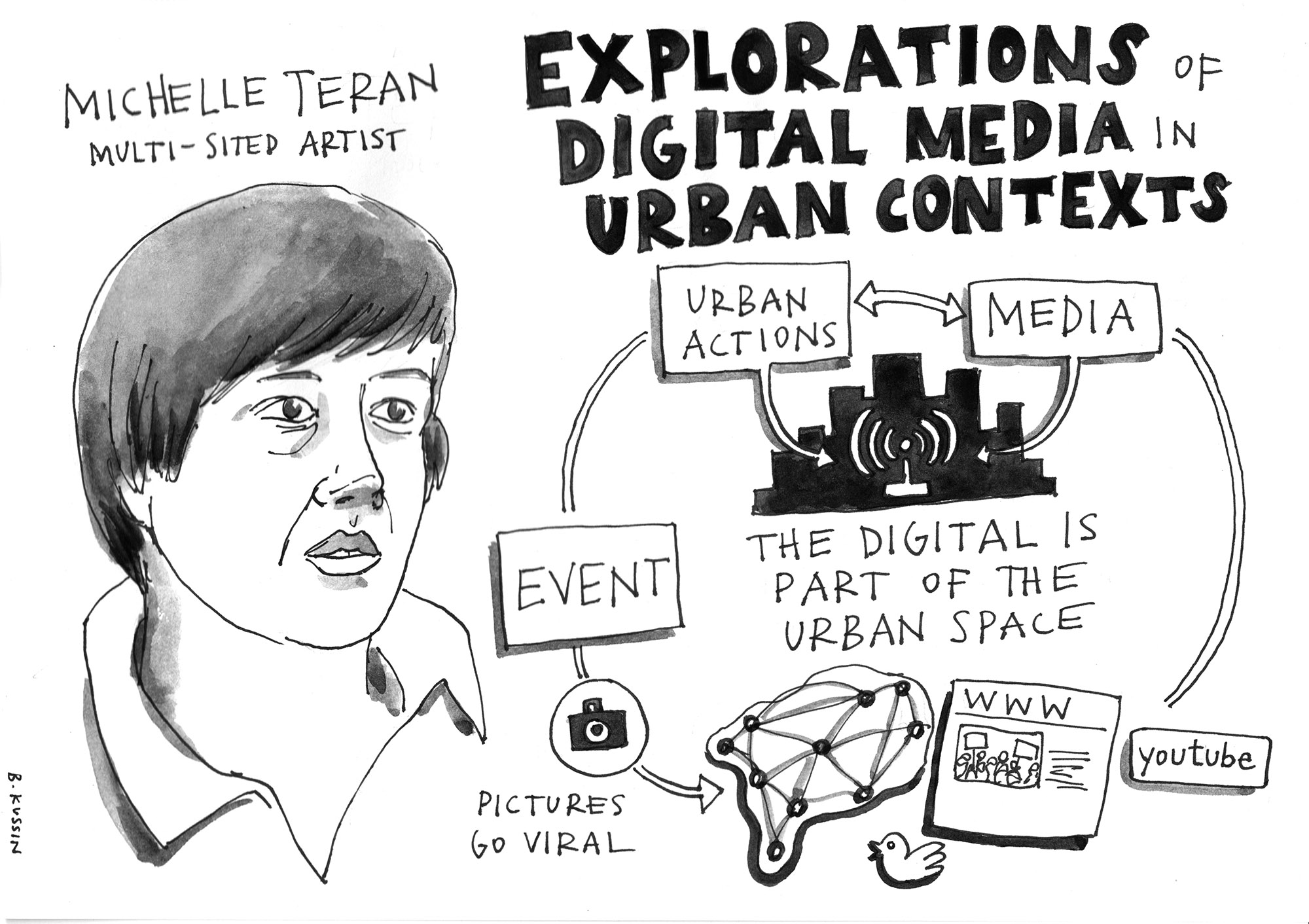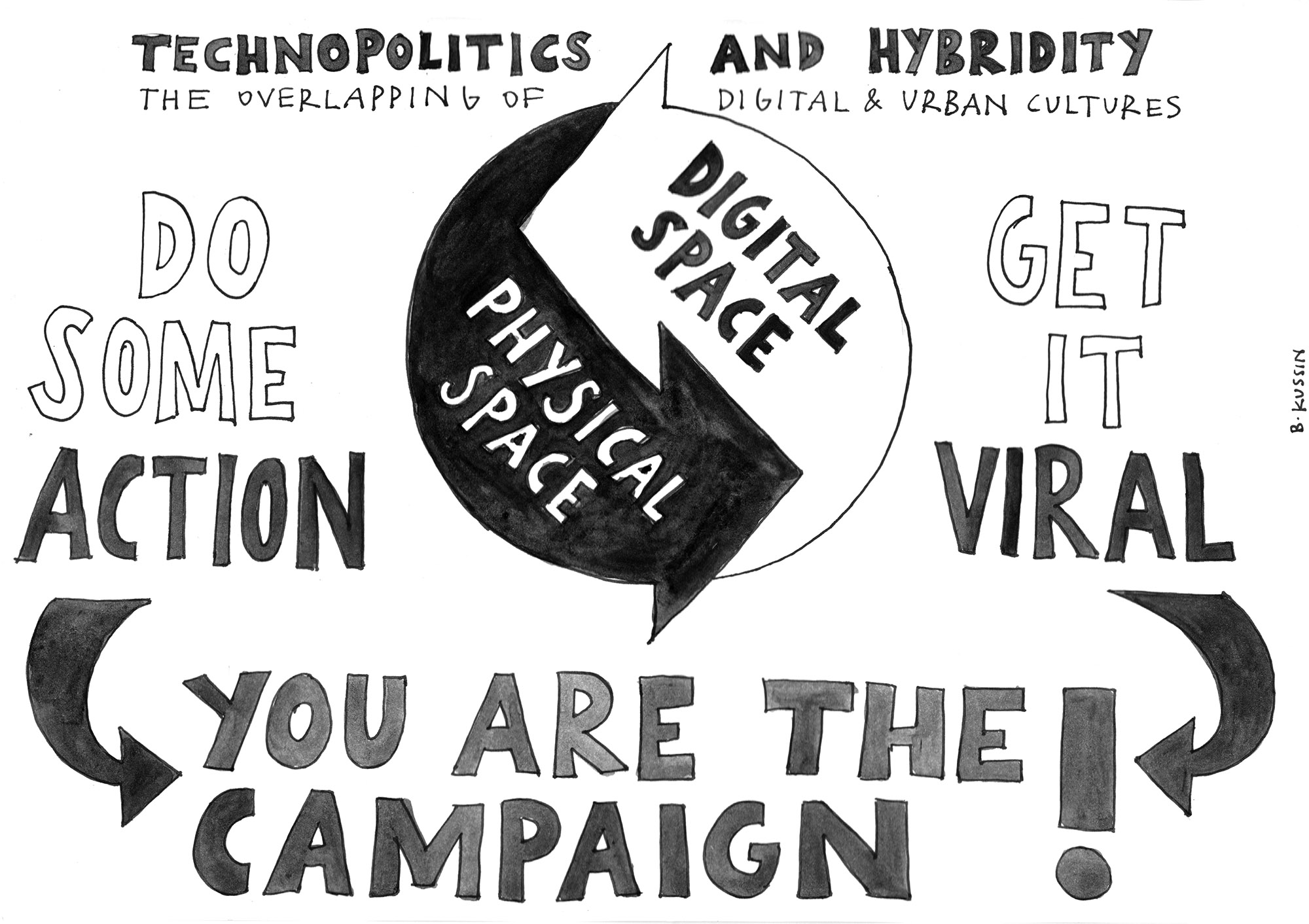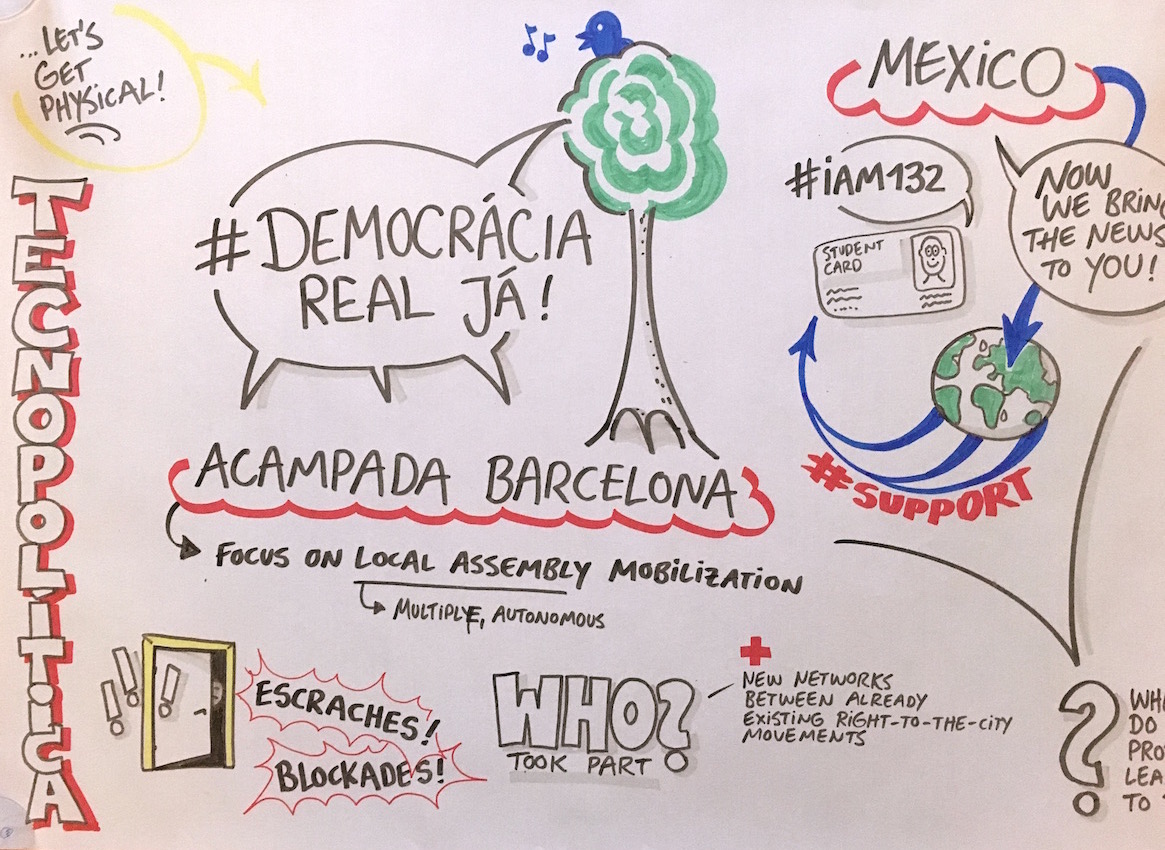TECHNOPOLITICS AND HYBRIDITY: DIGITAL TACTICS AND URBAN STRUGGLES
I have been working on the right to housing movement in Spain since 2013. I looked at how they used digital media to record people at the squares, scanning the squares by cameras.
For me this is a sort of reading, of assigning some legibility, from these individual bodies that become an uncoordinated yet collective choreography: the cameras documenting their position at the square and their relation to the multitude of people standing around them. So that for me is a technopolitical practice. It is about how things from the info-sphere are working with things that are taking place in urban space, different levels of interaction and interrelations between social media and physical experience.
It all started from the urban and civil uprising 15th of May of 2011, later known as 15M, when the twitter sphere and urban space got more and more interlinked. It started by some programmers that processed data generated by social media, creating an archive about 15M. They were only using what people were producing, a sort of datascreeping, but finding new ways to bring it all together: they made it available to everybody and invited everybody to contribute to it, creating his or her own storylines from the material found at the archive. In the incredible amount of informations they were going through all the digital trash to look out of something valuable, bringing together information and creating new narratives. In the fourth anniversary there have been 324 asambleas in towns and neighbourhoods, work groups, MAREAS as citizen’s movement, march of dignity, sinfónica as protest.

Another example are the campaigns of PAH (Plataforma de Afectados por la Hipoteca), a right to housing movement that emerged due to mortgage crisis in Barcelona in 2009, with up to 180 evictions a day. There are 216 nodes operating throughout Spain: the campaign consisted in easy-to-read-graphics, easily to understand, to circulate and to reproduce – using the campaign to highlight and visibilize certain parts at this very complex housing crisis.
¿donde está mi hipoteca?
It is not so much about hackers helping people, but more learning the tools to find out where and how people can address these problems, how to prevent being evicted. It was a nationwide campaign, social media campaign packages, including the graphics, the posters, any sort of useful documents, suggestions of tweets – a whole toolkit to be able to act. An important element was also a life feed from direct action as a symbolic takeover of a bank, sharing it as it is happening. There are some crucial characteristics of these tactics:
Concept of overflow (desborde):
it means decentralized actions connected through social media, coordinated, but autonomous, a collective construction that is at the same time uncontrollable. Mutant identities, loose control, actors operating with freedom, creating visibility in other places besides the initial point.
Transmedia storytelling:
means the telling of stories over multiple platforms: something may start at a typing pad, then it circulated through WhatsApp and different nodes. It is crucial to have WhatsApp, it is the only way to participate in campaigns; then it goes to Twitter, to Facebook, to all the other platforms, to TV, the information is jumping around. No problem with commercial software: whatever can be used by most people and easily …
Another campaign of PAH was in 2012 »obra social«, targeting and occupying empty buildings for a social use, owned by the bank and in disuse for at least three years. It is not a symbolic takeover, but people actually moving in. They have to contribute to the movement and to assemblies, so the different urban movements become connected to that building. [In 2015 Michelle lived in one of these buildings and produced a film »dignity/la dignidad« and also translated a manual into English.]
Whatever the practice is, it is crucial to produce a toolkit out of it, with the instructions, the graphics, the model and useful documents, showing people to assume their agency.

Finally, the concept of territories:
creating something viral through the digital networks is not enough, as we saw in the occupying of banks and buildings, all these actions are marking out territories as sites of direct actions. This whole ecosystem of nodes, which creates a social political fabric, taking place in the neighbourhoods, creating direct social connection with actions in other places, by mapping, visualization of data, and creating visibility of what is not officially visible, close to critical cartography, creating your own statistics for instance of how many evictions took place. Hybrid practices consist of talking about networks and ending up in the city space – and viceversa.
